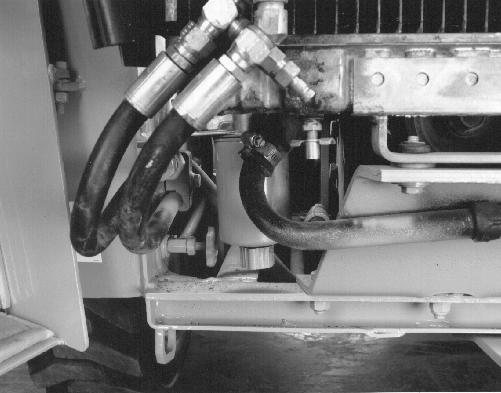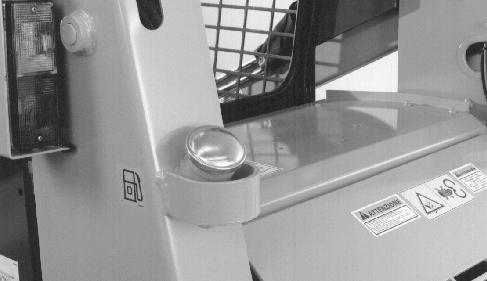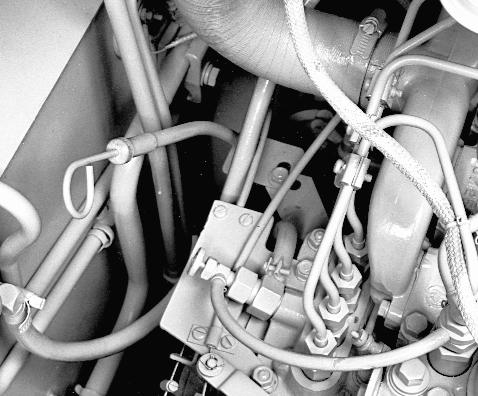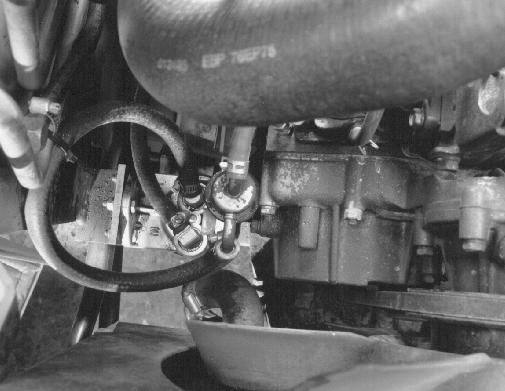
4 minute read
DIESEL FUEL SYSTEM
Service Specifications
Every 50 hours of operation...........................................Drain water from fuel filter Every 500 hours of operation.......................................................Replace fuel filter Every 1000 hours of operation.......................................Drain water from fuel tank Fuel tank capacity............................8.5 U.S. gallons (7.0 U.K. gallons, 32.2 litres)
Fuel Storage
Use No. 2 diesel fuel in the engine of this machine. The use of other fuels can cause the loss of engine power and high fuel consumption. In very cold temperatures, a mixture of No. 1 and No. 2 diesel fuels is temporarily permitted. See the following: NOTE: See your fuel dealer for winter fuel requirements in your area. If the temperature of the fuel lowers below the cloud point (wax appearance point), wax crystals in the fuel will restrict the fuel filter and cause the engine to lose power or not start. The diesel fuel used in this machine must meet the specifications in the chart on page “Specifications for Acceptable No. 2 Diesel Fuel” on page87 or Specification D975-81 of the American Society for Testing and Materials. If you keep fuel in storage for a period of time, you can get foreign material or water in the fuel storage tank. Many engine problems are caused by water in the fuel.
Keep the fuel storage tank outside and keep the fuel as cool as possible. Remove water from the storage container at regular periods of time. Fill the fuel tank at the end of the daily operating period to prevent condensation in the fuel tank.
WARNING: Engine fuel is flammable and can cause a fire or an explosion. Do not fill the fuel tank or service the fuel system near an open flame,welding, burning cigars, cigarettes, etc.
WARNING: Never refuel the machine when the engine is hot or running. Never smoke while refueling.
SA022
M139C
Specifications for Acceptable No. 2 Diesel Fuel
API Gravity, Minimum ........................................................................................ 34 Flash Point, Minimum ...................................................................... 140°F (60°C) Cloud Point (wax appearance point), Maximum ............................... -5°F (-20°C) Pour Point, Maximum ...................................................................... -15°F (-26°C) Distillation Temperature, 90% Point ........................ 540 to 640°F (282 to 338°C) Viscosity, at 100°F (38°C)
Centistokes ......................................................................................... 2.0 to 4.3
Saybolt Seconds Universal ................................................................... 32 to 40 Cetane Number, Minimum ...................... 43 (45 to 55 for winter or high altitudes) Water and Sediment, by Volume, Maximum .......................................... 0.5 of 1% Sulphur, by Weight, Maximum ................................................................ 0.5 of 1% Copper Strip Corrosion, Maximum ................................................................ No. 2 Ash, by Weight, Maximum ...................................................................... 0.1 of 1%
Fuel Conditioner
Diesel Fuel Conditioner is available from your Case dealer. Follow the instructions on the can. The conditioner will:
1.Clean the fuel injectors, valves and manifold for increased service life.
2.Disperse insoluble gummy deposits that can form in the fuel system. 3.Separate moisture from the fuel. 4.Stabilize the fuel in storage.
Replacing the Fuel Filter
Replace the fuel filter every 500 hours of operation or if you see a large amount of black smoke coming from the exhaust pipe. Replace the fuel filter (2) every 500 hours of operation or if you see a large amount of black smoke coming from the exhaust pipe. 1.Turn the fuel shutoff valve (3) completely clockwise to OFF.
Fuel Tank
Fill the fuel tank at the end of each day or at the end of each shift. This will help prevent condensation of water in the fuel tank. Always keep the area around the fuel cap (1) clean. 2
3
1

BP96C032
2.Clean the area around the filter.
3.Use a strap wrench and turn the filter counterclockwise to remove.
4.Remove the rubber seal from the stud on the filter head.
5.Use a cloth and clean the gasket surfaces of the filter body. 6.Apply clean engine oil to the new rubber seal.
7.Install the rubber seal on the filter head stud.
8.Apply clean oil to the gasket of the new filter. Do not fill the new filter with fuel before installation.
9.Turn the filter clockwise onto the filter body until the filter gasket makes contact with the filter body.
Continue to tighten the filter with your hand for 1/2 to 3/4 turn. IMPORTANT: Do not use a filter strap wrench to tighten the filter. You can cause a leak if the filter is dented with the wrench.

10.Turn the fuel shutoff valve completely counterclockwise to
ON.
11.Fill the tank with fuel and bleed the air from the fuel system. See the topic Removing Air from the Fuel
System in this manual.
Removing Air from the Fuel System
You must remove air from the fuel system if (a) the fuel tank is empty, (b) parts in the fuel system are removed for service, or (c) the machine is kept in storage for three months or more.
1
2
B877250
1.Fill the fuel tank and make sure the shutoff valve at the bottom of the tank is turn completely counterclockwise to (OPEN). 2.Loosen the air removal screw on the top of the fuel filter head. When air free fuel comes out, tighten the screw.
3.Turn the knob of the air removal valve (1) counterclockwise to ON. 4.Disconnect the return line 2.
Continued on next page

1
BP96C033
5.Actuate the hand primer lever (1) up and down. 6.Turn the knob of the air removal valve (1) clockwise to OFF. 7.Connect the return line. (2) 8.Start the engine and check for fuel leaks around the fuel filter.
9.Stop the engine.







